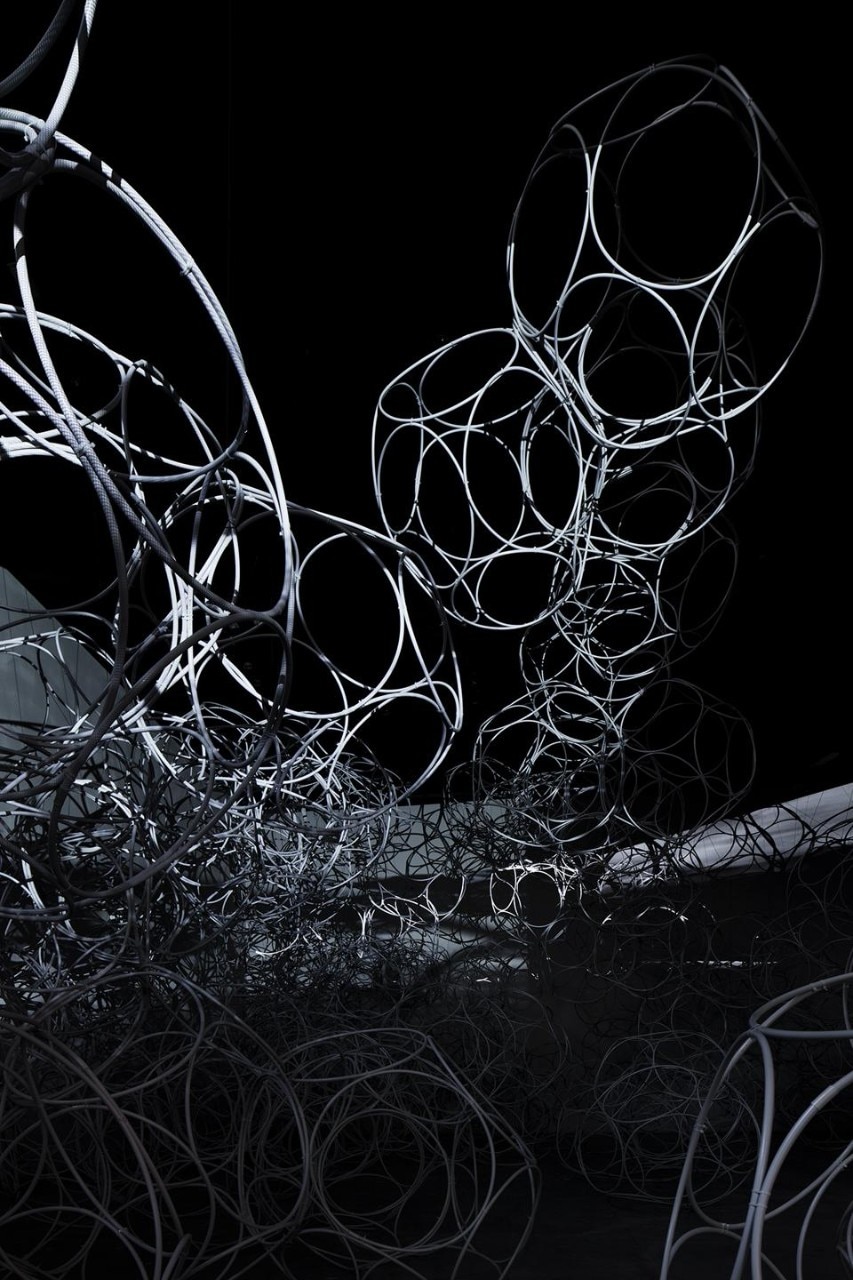Over the years, this utopian vision of a life suspended in the sky has led Saraceno to create a series of experimental structures such as inflatable balloons or modular structures that can interact with natural energies. His research investigates the possibility of colonizing the sky, looking for possible devices for life among the clouds—in a transparent bubble, migrating among the clouds, according to winds and weather, utilizing solar energy.
This project, designed by the artist for Enel's large space MACRO is another step toward the colonization of the sky, developed through an imaginary dialogue with the utopian visions of Yona Friedman and the theories of Richard Buckminster Fuller. Completely dark, the room is invaded by about 600 dodecahedra made with 18 km of the white plastic tubing normally used in electrical systems. The dodecahedron is composed of circles instead of the regular pentagons. This is a first link with the work of Friedman who, as early as the late 1950s, used this geometric system, "Space-Chains," for the structure of his Spatial City.
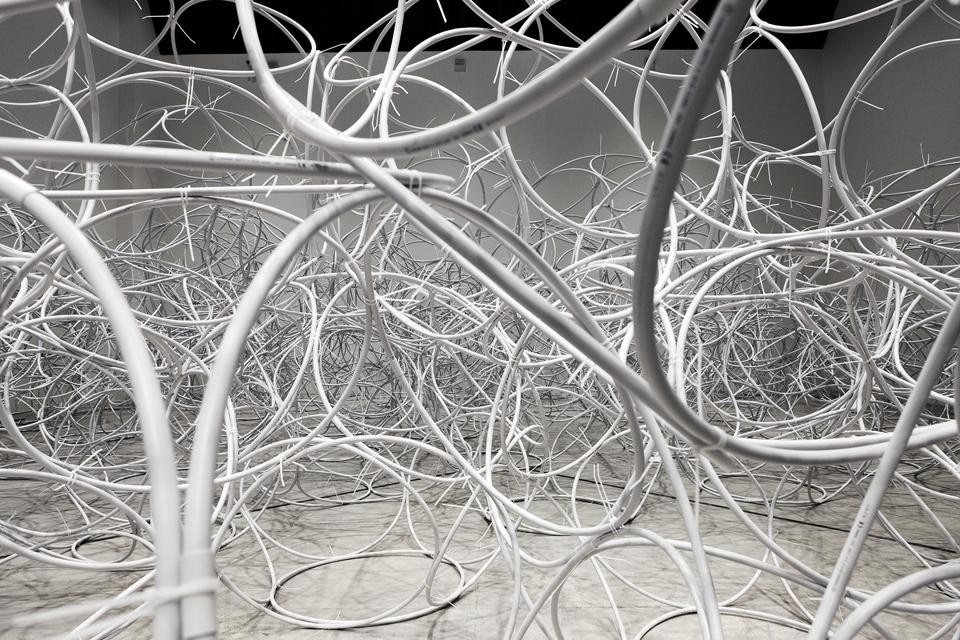
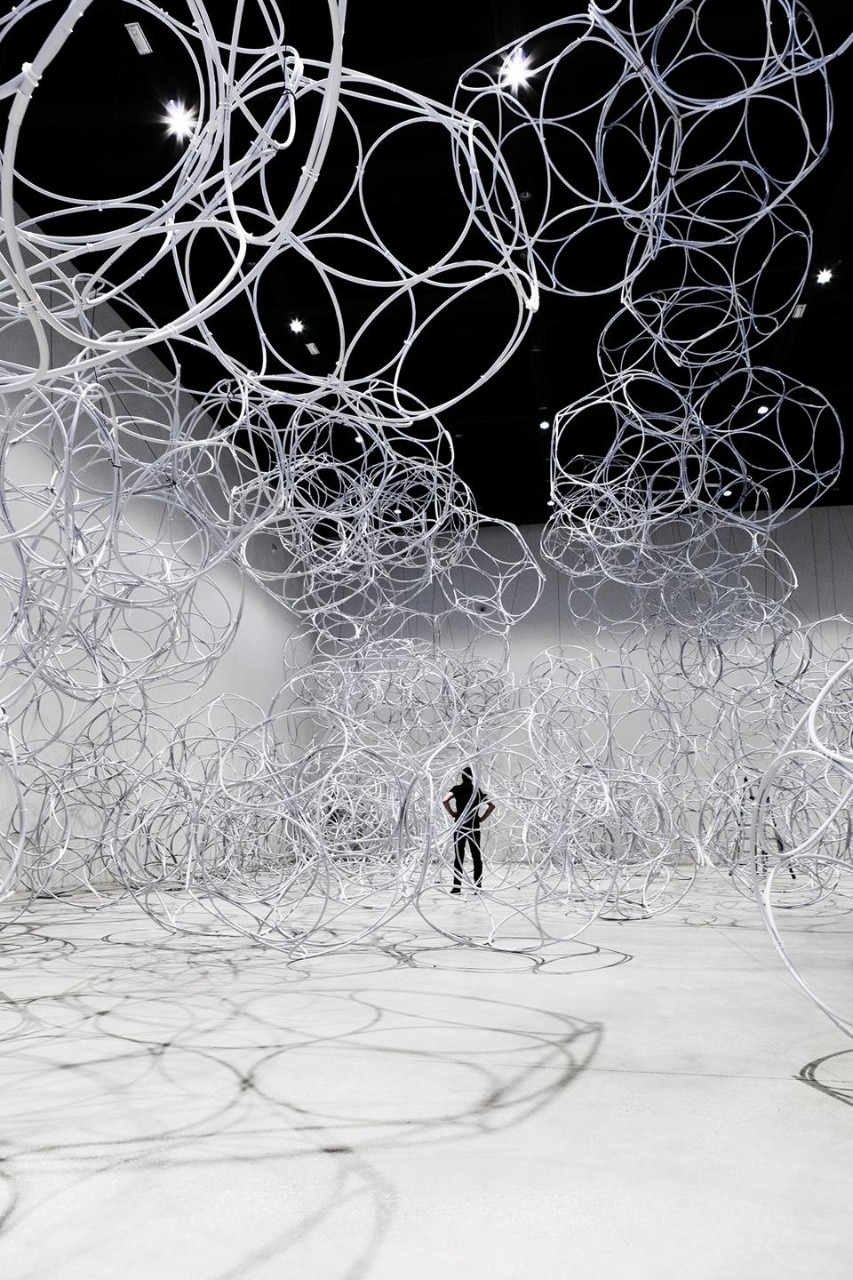
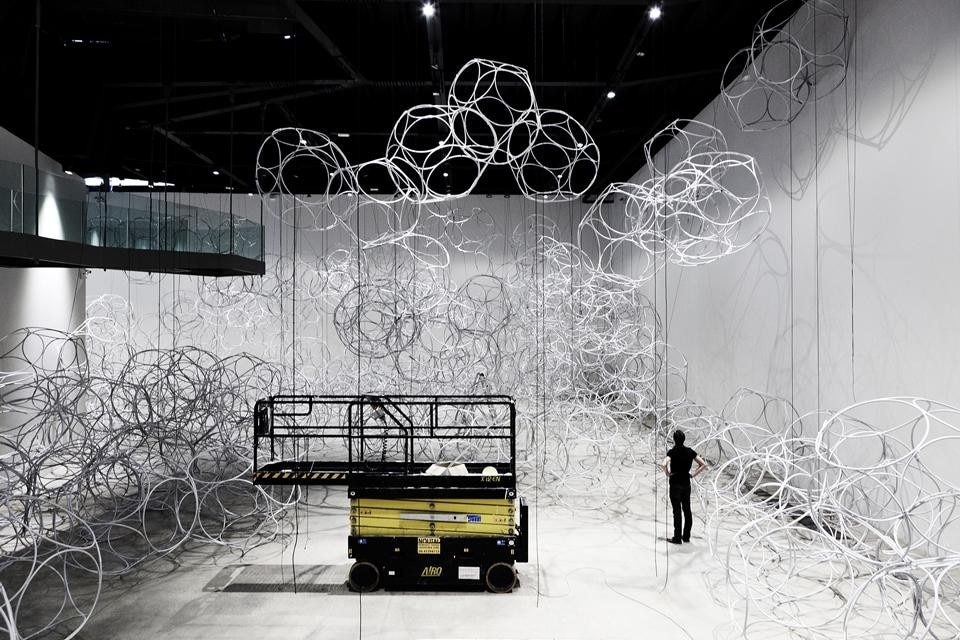
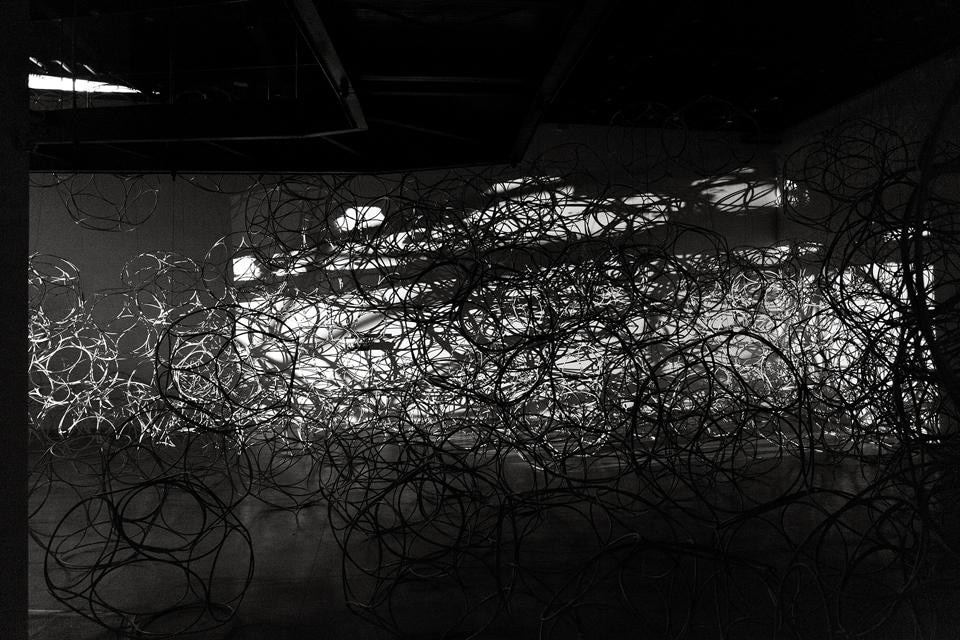
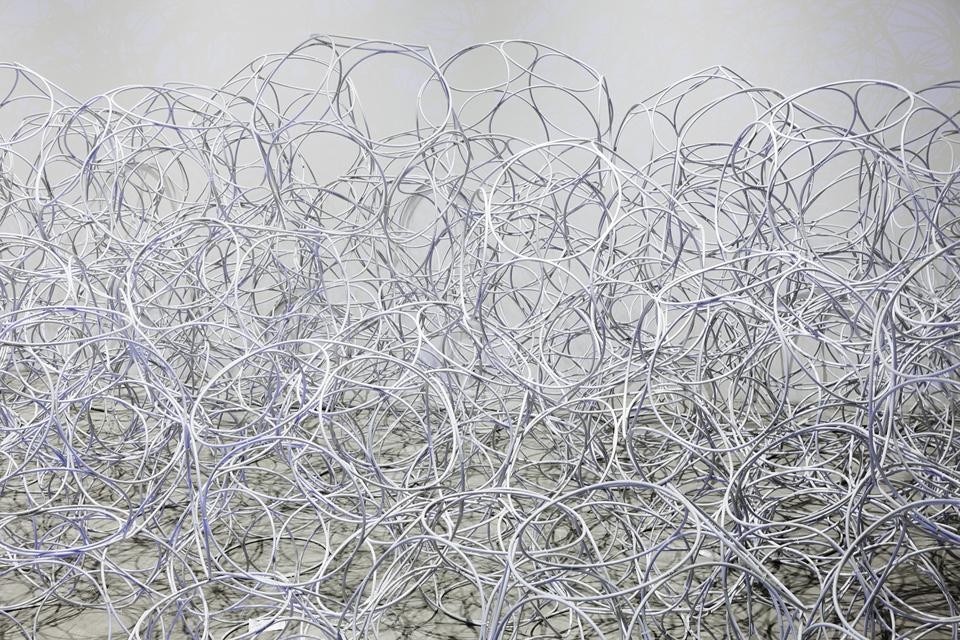
[2A + P / A]
25 June — 9 October 2011
Tomás Saraceno: Cloudy Dunes. When Friedman meets Bucky on Air-Port-City
MACRO, Roma
